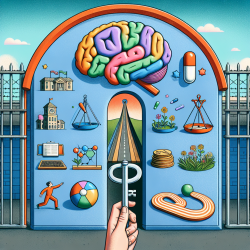Exploring ADHD Treatments in Correctional Settings
Attention-Deficit/Hyperactivity Disorder (ADHD) is a common condition that affects many individuals, including those in correctional settings. The prevalence of ADHD in these environments is significantly higher than in the general population, presenting unique challenges for treatment. A recent scoping review titled "Treatments for ADHD in adults in jails, prisons and correctional settings: a scoping review of the literature" sheds light on the current state of research and offers insights into potential treatment approaches.
The Challenges of Treating ADHD in Correctional Settings
Treating ADHD in correctional facilities is complicated by several factors. Stimulants, the most common treatment for ADHD, pose risks of misuse and diversion, especially in environments where substance use disorders are prevalent. Additionally, both pharmacological and non-pharmacological treatments require significant staff resources, which can be limited in these settings.
Key Findings from the Scoping Review
The scoping review analyzed 565 articles, ultimately including 32 in the final review. The findings highlight several critical points:
- There is a lack of consistent recommendations regarding the use of stimulants, with some experts advocating for their use as a first-line treatment and others suggesting they be avoided.
- Non-stimulant medications have been examined in only a few studies, indicating a need for further research in this area.
- Non-pharmacological treatments, such as dialectical behavior therapy, have been explored but require more extensive study to establish their efficacy.
Implications for Practitioners
For practitioners working in correctional settings, the review suggests several areas for improvement and further research:
- Standardized Screening and Diagnosis: Developing consistent methods for diagnosing ADHD can help ensure that individuals receive appropriate treatment.
- Exploring Non-Stimulant Options: Given the potential risks associated with stimulants, investigating non-stimulant medications and non-pharmacological interventions could provide safer alternatives.
- Addressing Research Gaps: More research is needed to understand the impact of ADHD treatments on the institutional environment and to explore the effects of treatment on diverse populations, including non-male and non-white individuals.
Conclusion
The scoping review highlights the need for more comprehensive research into ADHD treatments in correctional settings. By addressing the identified gaps and exploring alternative treatment options, practitioners can improve the health outcomes for individuals with ADHD in these environments.
To read the original research paper, please follow this link: Treatments for ADHD in adults in jails, prisons and correctional settings: a scoping review of the literature.










